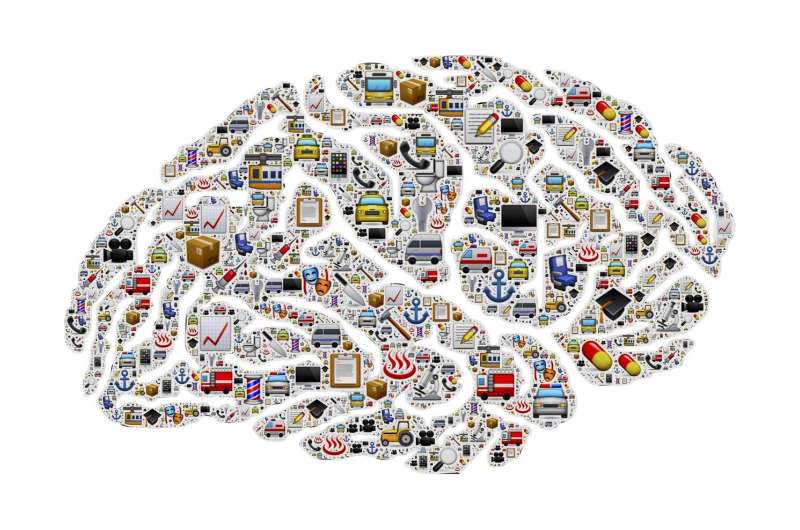How the brain knows when to take out the trash

The brain has its own housekeeping service, a sophisticated mechanism that cleans up debris that is left over from cellular activity. But scientists have had a hard time figuring out exactly how the brain knows when to initiate this cellular "trash pickup."
A Yale-led team of scientists has identified a protein that is key to this process, which is known as autophagy. That protein, ATG-9, clocks synaptic activity and signals a need for increased autophagy, in which neuronal debris created by increased activity is engulfed and degraded, they report Jan. 21 in the journal Neuron.
Mutations that affect ATG-9 trafficking at neuronal junctions, known as synapses, may help explain the failure of autophagy to do its job during increased synaptic activity, a deficit which has been linked to several neurodegenerative diseases, including Parkinson's disease.
"Neurons are frequently active and their machineries are subject to wear and tear," said Daniel Colón-Ramos, the Dorys McConnell Duberg Professor of Neuroscience and Cell Biology at the Yale School of Medicine and senior author of the paper.
The more active these neurons become, the greater the need for cellular degradation to get rid of the damaged cellular components. During autophagy, neurons create an organelle that is the cellular equivalent of a trash pickup truck, which isolates, carries, and later destroys damaged cellular components. Where and when the organelle is formed is important because pickup needs to be timed and coordinated. It has been a mystery how neurons coordinate this process.
For the new study, the research team—led by Colón-Ramos and first author Sisi Yang, a doctoral candidate at Yale—was interested in the function of the protein ATG-9, which they had observed near the synapses of neurons. Using genetic molecular approaches, they discovered that ATG-9 tracks neuronal activity by undergoing a process called the synaptic vesicle cycle, in which cells secrete neurotransmitters that carry out brain functions. When synaptic activity increases, they found, so does the synaptic vesicle cycle and ATG-9 trafficking. This, in turn, signals the need for the autophagy clean-up crew.
"We think that as these neurons perform their function and transmit information, ATG-9 acts as a sort of activity log, which when neuron activity increases, helps alert cells to produce more autophagy for future cleanups," Yang said. "Therefore, ATG-9 acts like a coordinator of synaptic activity and autophagy."
The findings also add another clue to the underlying pathology of neurodegenerative diseases that have been linked to the impaired function of autophagy. For instance, the authors found that several mutations related to synaptic activity—including a genetic mutation identified in humans and linked to Parkinson's disease—affects the trafficking of ATG-9 at the synapses and hinders the ability of neurons to increase autophagy when neuronal activity rises.
"We find that in both vertebrate and invertebrate neurons, affecting ATG-9 trafficking at the synapse affects the ability of neurons to induce activity-dependent autophagy," Colón-Ramos said. "The fact that these same genetic lesions have been associated with neurodegenerative disorders now provide targets to reactivate these housekeeping processes, perhaps preventing the neuronal dysfunction observed in neurodegenerative diseases."
The laboratories of Yale's Pietro de Camilli, the John Klingenstein Professor of Neuroscience and professor of cell biology, and Jihong Bai of the Seattle-based Fred Hutchinson Cancer Center also contributed to the study.
More information: Sisi Yang et al, Presynaptic autophagy is coupled to the synaptic vesicle cycle via ATG-9, Neuron (2022). DOI: 10.1016/j.neuron.2021.12.031

















